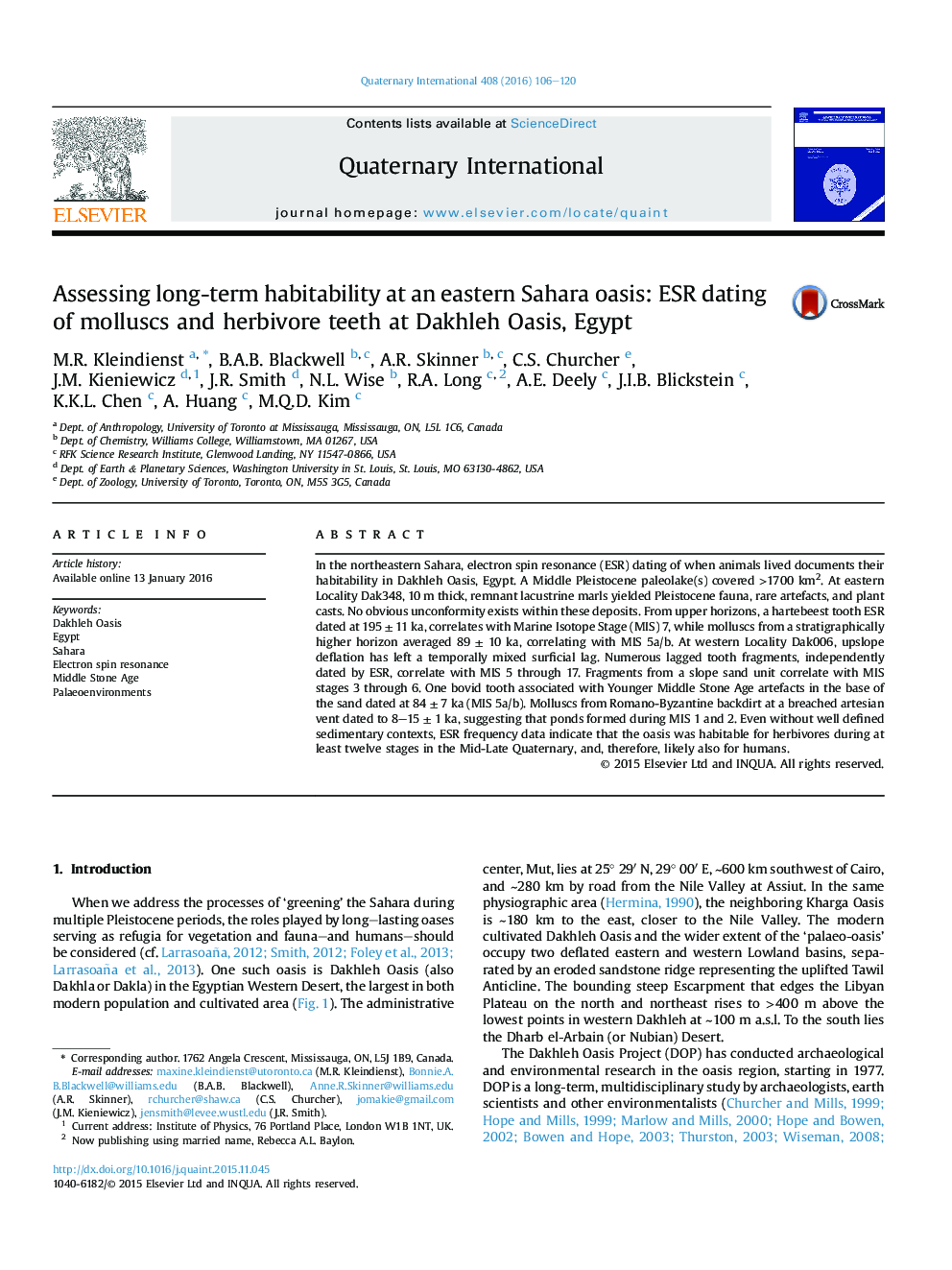| Article ID | Journal | Published Year | Pages | File Type |
|---|---|---|---|---|
| 1039931 | Quaternary International | 2016 | 15 Pages |
In the northeastern Sahara, electron spin resonance (ESR) dating of when animals lived documents their habitability in Dakhleh Oasis, Egypt. A Middle Pleistocene paleolake(s) covered >1700 km2. At eastern Locality Dak348, 10 m thick, remnant lacustrine marls yielded Pleistocene fauna, rare artefacts, and plant casts. No obvious unconformity exists within these deposits. From upper horizons, a hartebeest tooth ESR dated at 195 ± 11 ka, correlates with Marine Isotope Stage (MIS) 7, while molluscs from a stratigraphically higher horizon averaged 89 ± 10 ka, correlating with MIS 5a/b. At western Locality Dak006, upslope deflation has left a temporally mixed surficial lag. Numerous lagged tooth fragments, independently dated by ESR, correlate with MIS 5 through 17. Fragments from a slope sand unit correlate with MIS stages 3 through 6. One bovid tooth associated with Younger Middle Stone Age artefacts in the base of the sand dated at 84 ± 7 ka (MIS 5a/b). Molluscs from Romano-Byzantine backdirt at a breached artesian vent dated to 8–15 ± 1 ka, suggesting that ponds formed during MIS 1 and 2. Even without well defined sedimentary contexts, ESR frequency data indicate that the oasis was habitable for herbivores during at least twelve stages in the Mid-Late Quaternary, and, therefore, likely also for humans.
